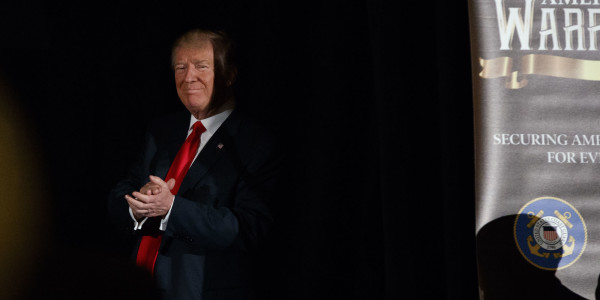

This week, there has been much conversation around veterans who “can’t handle” the “horrors” of war, and experience “mental health problems.” This characterization reveals an all too common stigma of the invisible wounds of war. It is also wrong, reflects a broader lack of knowledge and misunderstanding around the injury and how to treat it, and has egregious consequences.
But from where I stand, this conversation also presents an important opportunity to rise above politics and get to solutions.
When the general public thinks of a service member injured while fighting the Global War on Terror, they likely think of visible wounds like limb loss or severe burns. But some warriors come home with symptoms of the invisible wounds of war: traumatic brain injury, psychological health conditions like post-traumatic stress or both.
Through my own military service and the work of the Bush Institute, I know scores of service members and veterans — men and women of all services, ranks, and skill sets — who have come home with invisible wounds. Some have names you may know, like Ryan Pitts and Kyle White. These Medal of Honor recipients have been recognized by their nation for courage and strength, and are dedicated to encouraging veterans dealing with invisible wounds to seek treatment for their injuries.
Many others, like the men and women who participated in the Bush Institute’s Warrior 100K last weekend, live more quietly. Yet they are far from weak, or broken, or fallible. In fact, those who face their injuries and seek treatment demonstrate their strength many times over.
Some of the challenges with these injuries are not the injury itself, but the stigma associated with them. TBI and psychological health conditions like PTS are natural outcomes of war. With the proper care, the invisible wounds are treatable. But if the perception exists that by being injured, they are somehow weaker than their colleagues, warriors won’t ask for help.
Recently, the Bush Institute commissioned a survey of a group of post-9/11 military veterans and general population adults to gain a better understanding of perceptions of veterans, including around the invisible wounds of war.
The survey found that over 80% of warriors struggling with invisible wounds are hesitant to seek care because of embarrassment of shame; belief that their family will not understand; and belief that seeking care will result in negative repercussions in the workplace. We know the consequences of ignoring injuries due to shame or stigma. Those outcomes are unacceptable.
Beyond stigma and misconceptions, barriers to accessing and receiving care prevent many of our warriors from connecting to the treatment that they need. Many treatment options exist for the invisible wounds of war; yet, studies have shown that less than half of military personnel and veterans who experience them actually receive any care due to individual, logistical, financial, systemic, and community barriers.
Here’s another misperception: it’s not just the federal government’s responsibility. While not perfect, the VA and DoD have made great strides in the delivery of care for these injuries. But even assuming the provision of effective care, less than 28% of all veterans will ever go to the VA for treatment. The vast majority of our warriors must also be able to rely on the private sector for high quality care. Unfortunately, that system can be highly segmented and very confusing. That’s why it’s critical that all sectors, including the private sector, come together to find real solutions to increase the number of service members and veterans seeking and receiving culturally competent care, and requires an understanding of how to treat those affected by these wounds with respect and empathy.
All citizens have a duty to understand these issues, increase awareness, and build a system of care that empowers warriors to overcome their injuries – not just our leaders. Together, we can not only improve the health and well-being of these warriors, but continue to leverage their strength and leadership in the coming decades.
